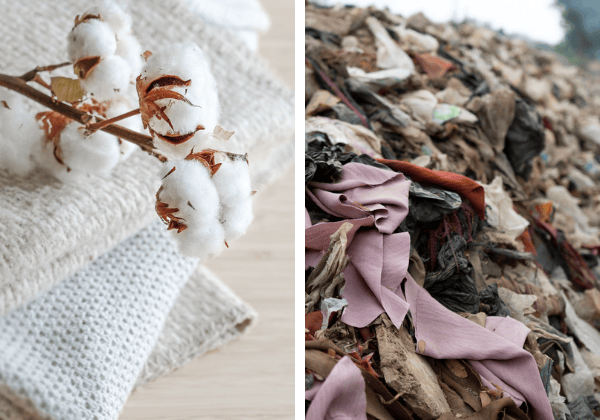Sun safe with standards
Statements
- Standards Australia has recently published a revised standard for the testing and labelling of sunscreens.
- With one of the highest rates of skin cancer in the world, the revised standard gives increased confidence to consumers when choosing sunscreen to best protect their skin from the sun.
- The revised standard aligns Australian and New Zealand test methods for determining SPF and water resistance with globally written, agreed and published ISO standards.
Australia has one of the highest rates of skin cancer in the world and is primarily caused by excessive exposure to UV (ultraviolet) radiation from the sun, something sunscreen can help to prevent[1]. Being sun safe is a way of life for many Australians, with sunscreen a necessary household item given our high UV levels.
Peak bodies responsible for sun protection in Australia and New Zealand recommend applying sunscreen as part of a daily routine rather than just ahead of planned outdoor activity, to help reduce the significant impact of skin cancer[2].
Standards Australia has recently published a revised standard that establishes testing and labelling for sunscreens that will give confidence to consumers in selecting a product which best suits their need for skin protection from harmful UV rays.
The latest revision of AS/NZS 2604, Sunscreen Products – Evaluation and Classification, included a thorough revision by health, government, and industry experts to align with technological updates and international guidance.
“This standard sets out testing methods and labelling requirements for sunscreen products, including the water resistance and UV filtering requirements, making it an important confidence builder for consumers,” said Adjunct Associate Professor Craig Sinclair, Head of Prevention at Cancer Council Victoria and chair of the technical committee CS-042, Sunscreen Agents, responsible for the standard.
The revision completes the transition of procedures for determining broad spectrum, sun protection factor (SPF) and water resistance from local Australian and New Zealand test methods to globally written, agreed and published ISO standards.
A key change also includes ISO 24444:2019, Cosmetics — Sun protection test methods — in vivo determination of the sun protection factor (SPF), which superseded the previous referenced standard ISO 24444:2010. This update of the international standard includes three new reference standard sunscreens – P5, P6 and P8, which will assist in increasing the accuracy of a lab determining an SPF, ensuring even greater assurance for consumers.
“In recent years, we have seen some misconceptions about sunscreen, particularly on social media which is surprising given the evidence of effectiveness of sunscreen to reduce skin cancer risk is stronger than ever. We know standards with clear testing requirements and labelling guidelines are key in building trust in this vitally importantly product for Australian consumers,” concluded Mr Sinclair.
[1] https://www.cancerwa.asn.au/articles/news-2018/why-does-australia-have-so-much-skin-cancer-hint-i/
[2] https://www.cancer.org.au/media-releases/2019/peak-health-bodies-recommend-new-approach-to-sunscreen-use

- Standards Australia has recently published a revised standard for the testing and labelling of sunscreens.
- With one of the highest rates of skin cancer in the world, the revised standard gives increased confidence to consumers when choosing sunscreen to best protect their skin from the sun.
- The revised standard aligns Australian and New Zealand test methods for determining SPF and water resistance with globally written, agreed and published ISO standards.
Australia has one of the highest rates of skin cancer in the world and is primarily caused by excessive exposure to UV (ultraviolet) radiation from the sun, something sunscreen can help to prevent[1]. Being sun safe is a way of life for many Australians, with sunscreen a necessary household item given our high UV levels.
Peak bodies responsible for sun protection in Australia and New Zealand recommend applying sunscreen as part of a daily routine rather than just ahead of planned outdoor activity, to help reduce the significant impact of skin cancer[2].
Standards Australia has recently published a revised standard that establishes testing and labelling for sunscreens that will give confidence to consumers in selecting a product which best suits their need for skin protection from harmful UV rays.
The latest revision of AS/NZS 2604, Sunscreen Products – Evaluation and Classification, included a thorough revision by health, government, and industry experts to align with technological updates and international guidance.
“This standard sets out testing methods and labelling requirements for sunscreen products, including the water resistance and UV filtering requirements, making it an important confidence builder for consumers,” said Adjunct Associate Professor Craig Sinclair, Head of Prevention at Cancer Council Victoria and chair of the technical committee CS-042, Sunscreen Agents, responsible for the standard.
The revision completes the transition of procedures for determining broad spectrum, sun protection factor (SPF) and water resistance from local Australian and New Zealand test methods to globally written, agreed and published ISO standards.
A key change also includes ISO 24444:2019, Cosmetics — Sun protection test methods — in vivo determination of the sun protection factor (SPF), which superseded the previous referenced standard ISO 24444:2010. This update of the international standard includes three new reference standard sunscreens – P5, P6 and P8, which will assist in increasing the accuracy of a lab determining an SPF, ensuring even greater assurance for consumers.
“In recent years, we have seen some misconceptions about sunscreen, particularly on social media which is surprising given the evidence of effectiveness of sunscreen to reduce skin cancer risk is stronger than ever. We know standards with clear testing requirements and labelling guidelines are key in building trust in this vitally importantly product for Australian consumers,” concluded Mr Sinclair.
[1] https://www.cancerwa.asn.au/articles/news-2018/why-does-australia-have-so-much-skin-cancer-hint-i/
[2] https://www.cancer.org.au/media-releases/2019/peak-health-bodies-recommend-new-approach-to-sunscreen-use

Email:

Email:


